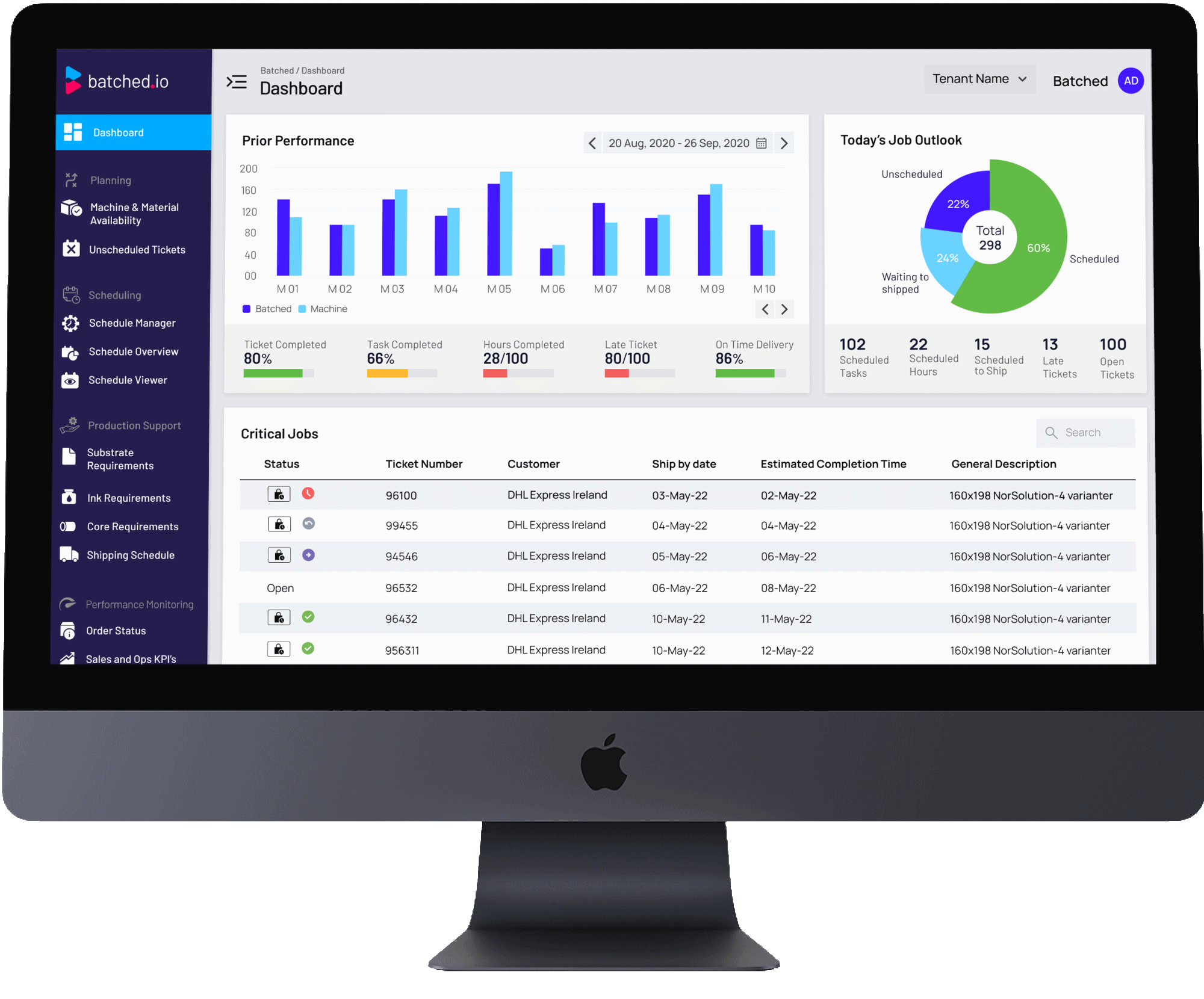Batched

Product Brief
In a job shop scenario, where nearly every job has unique requirements, and every machine in the value stream has different capabilities, batched helps find the most optimal way to do work.
The product has helped its customers increase their EDIBTA margin by up to 35% and reduce their raw material wastage by up to 33%
The Start
Our Client initially approached us for a couple of engineers with a specific skill to assist them in adding more capabilities to an existing prototype. The existing prototype was an on-prem solution where every deployment’s code was maintained in its source control repository and had changes to the current code and database.
The existing prototype used R, Excel, SQL Server, and PowerBI to import data from an ERP system, run algorithms on the data, store output in SQL server and use PowerBI to display the output reports. The Client had some outsourcing experience working with engineers located in Asia. The Client had been closely working with one leading ERP company in the space and had a high chance of scaling the go-to-market, given a clear and highly valuable value proposition.
First 30 days of our engagement
- We did a detailed walkthrough of the existing prototype with the Client’s SMEs. Since it was the Covid period, we could not visit any end customer location in person to observe how end customers generate schedules today and what day-to-day challenges they face.
- We researched the business domain by watching as much as online resources and videos as possible. We also studied any competition present and found out that there was only one real competitor in the space. We understood their offerings. We understood the market size with the assistance of our Client.
- We created user personas, and value position design (jobs to be done, pains and gains).
- We understood budget and timeline constraints with the Client. After 14 days of rigorous exercise in research, user empathy, and alignment to business drivers and constraints, we created a 90 and 180-day roadmap with three clear objectives.
Our Collective Success
In the first three months, we ensured the mid and long-term cost reduction of rolling out and supporting a customer by rearchitecting the software cloud-first, serverless, and managed services based.
In the first three months, we ensured that the dependency of the Customer’s IT team for software rollout was reduced to less than an hour.
In the first six months, we ensured that the customer onboarding was reduced from 6-8 weeks to 1-2 weeks by designing the system in a multi-tenant and self-serve fashion.
In the first nine months, we achieved real-time monitoring of the uptime of all the critical components of the product. The product reached 30 paying B2B SaaS customers in the first twelve months.
Our Learning
In the B2B space, the sales cycle and cost of customer acquisition of a product with revenue and customer-impacting value proposition is much smaller than a product just focusing on cost and operational efficiency.
Not all features in the product drive customer satisfaction and even usage as intended. A product eventually gets used chiefly for the biggest pains or gains it solves. Users are way more intelligent than the product features for the rest of the perceived needs.
More features are not equal to more revenue or more customer satisfaction. It is ok to reduce the number of features added to the product after the product market fit since the focus shall shift towards the unit economics ability of customers to pay for more features vis-a-vis value derived by them. Even the team size could be decreased proportionally.

